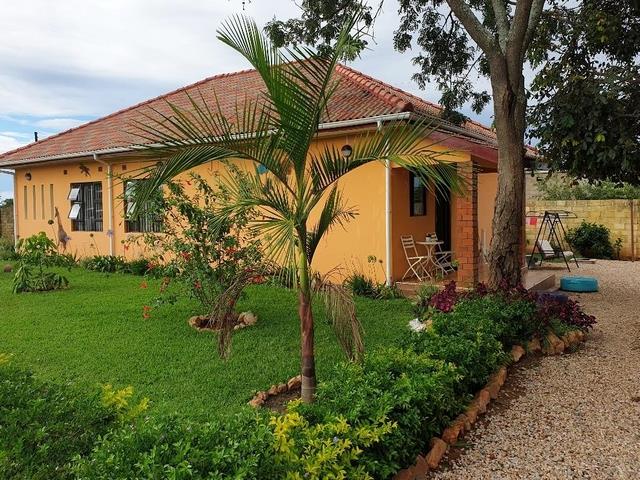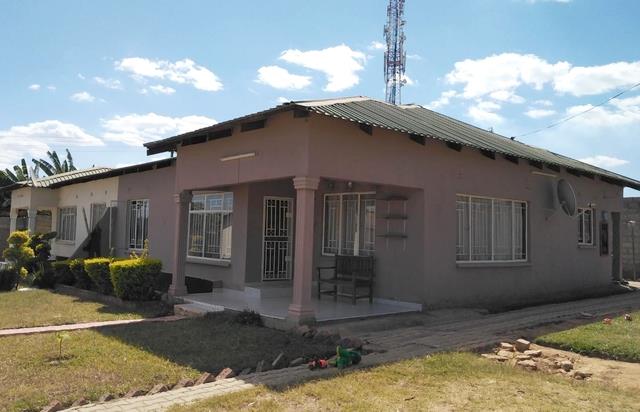Zambia is a safe, peaceful, democratic country that has benefited from good macro-economic stability over the last 25 years.

This is according to Lusungu Kayela, Seeff’s Principal in Zambia, who says that this lower-middle income country has a population estimated at 17.86 million and land extent of 743 390 square kilometres, and despite many economic challenges over the last decades, Zambia has made overall significant social, economic and political progress.
As such the country is now recognised as one of the Sothern African Development Community’s (SADC) more attractive investment destinations.
Zambia is continuously weaning itself from its dependence on the copper mines and has many strong international companies operating in the country, especially in retail.
The country is part of one of the more dynamic regions of the world, and the International Monetary Fund (IMF) estimates that it will grow at 5.2% per annum through to 2023. It has grown at a similar pace since 2000.
Zambia is one of the most urbanised countries in Sub-Saharan Africa, with 44% of its population living in a few urban areas.
Foreign investment
Over the last 20 years Zambia has seen a broad-based growth based on improvements in productivity and entrepreneurship across multiple sectors, including agriculture, mining, manufacturing, banking and telecommunications. This has been supported by substantial investments in infrastructure.

According to The Urban Africa Real Estate Report of 2018, South Africa accounts for 51% of the international funds invested, and more than 10% of capital comes from Zambia’s neighbours - Botswana and Tanzania.
The international investors transacting in Zambia include quality names such as Hyprop (SA), SA Corporate Real Estate (SA), Grit (Mauritius), Novare (SA), Actis (UK), PrimeTime (Botswana), Terrace Africa (SA) and Heriot Properties (SA). Shoprite also has a significant wholly-owned property portfolio in Zambia.
Chinese investors are quite active in the residential and office space market, and in the retail market to a smaller extent.
At the moment there is limited interaction between the Chinese players and the rest of the property community, whether from a funding, leasing or tenant perspective.
The 16 000sqm SunShare office across East Park Mall and Arcades has been a successful investment even though some of the retail developments have been less lucrative and seem to be primarily tenanted by retailers with lower-priced goods. It is, however, expected that Chinese players will eventually become more integrated in the market (Urban Africa Real Estate Report 2018).
The residential rental market
Rentals account for about 80% of Zambia’s property market in a few urban areas in the country’s capital, Lusaka, and Copperbelt, Ndola and Kitwe, with the majority of the population in these areas being low- to middle-income earners.

There is, however, a significant amount of expatriates including individuals, employees of companies and diplomats (embassies) and international organisations such as the UN accounting for the higher-end properties with monthly rentals of between US$1 000 to US$3 000. These properties are currently experiencing a downturn/slump.
The middle market is characterised by average monthly rentals of between US$500 to US$1 000, and has remained resilient despite increases in interest rates and the economic slowdown of the past three years.
The analysis of middle-market neighbourhoods in the south of Lusaka suggests a slow maturing of the market, possibly reflecting the tighter economic conditions of recent years.
A review of the above suggests a slowing rental market from an income perspective as yields from rental properties have been higher in the past. Over the longer term, the limited supply to this market could ensure that capital appreciation averages above 3% to 4% per annum in local currency.
The middle market appears to be holding up better than the top end as rental increases at least track inflation, if not exceeding it in some cases. As a result, total returns, being the sum of net income and capital appreciation, are on track to beat inflation across the middle market, despite recent challenges.

The lower middle market is defined as the market for monthly rentals between US$250 to US$500 and possibly offers the most attractive yields to investors. This is well supported by demand and can be a large catalyst for economic growth and financial deepening.
Newly-built luxury complex for rent/sale
There are new apartments located in Roma - an upcoming area for new modern offices close to major shopping malls, schools and hospitals. Roma has also seen companies such as MTN Zambia and Mount Meru, among others, relocate their headquarters to the area.
These magnificent light, neat and modern apartments with high-quality finishes and fittings offer an intelligent layout that provides lavish accommodation, but at the same time still ensures privacy.
The complex consists of four three-bedroom apartments with beautiful gardens, private swimming pools and a barbeque area.
The property also offers an additional four one-bedroom apartments. Rental prices range from US$1 300 for furnished one bedroom apartments to US$2 800 for three bedroom apartments.
Commercial property market
For a long time the only purpose-built buildings in Zambia’s capital city, Lusaka, were located in the central business district (CBD). These mostly belonged to parastatal organisations and to commercial banks that utilised them as their company head offices.

After the liberalisation of the economy, however, commerce and industry started to flow, and so did the general wealth of the Zambians.
As a result of this rapid growth - that was not envisaged to grow as exponentially in such a short space of time - congestion in the CBD led to a mass exodus of corporates from the CBD into suburbia and into the residential areas of Lusaka where homes were rented and converted into office space.
At the turn of the millennium, GDP growth rates were averaging 6% and suburbia could not sustain the demand for office space any longer. This in turn created a strong case for purpose-built office space and almost 20 years later, this market has grown and has managed to bring down rental rates from an average of US$25 per square metre (up until two years ago) to an average of US$15 per square metre.
The selling rates of office space have remained largely unchanged due to the debt finance used to buy these buildings, averaging around US$700 to US$1 200 per square metre.
Tourism
Zambia’s tourism market remains buoyant and boasts untapped potential with around nineteen national parks and several game management areas doted around a country of 750 000 square kilometres.

Tourism main spots are spread vastly, from a number of waterfalls and deep lake waters in northern Zambia, white sandy beaches on the shores of the Bangweulu, beautiful game viewing in the Luangwa Valley and bird migrations in the Kafue National Park, to the world-renowned Mosi-oa-Tunya/Victoria Falls - one of the seven natural wonders of the world and a United Nations World Heritage site on the borders of Zambia and Zimbabwe.
Livingstone, the tourist capital of Zambia where the Victoria Falls is located, has an international airport with daily flights from Johannesburg, Addis Ababa and Nairobi, and takes under two hours to reach from Johannesburg - making it even closer than Cape Town.
There are a number of lodges and tourism investment properties in Livingstone for investors in the hospitality business to consider, including a beautiful bush lodge virtually in the Mosi-oa-Tunya National Park.
Farms and agricultural block
For many years Zambia has been described as a landlocked country endowed with a large land resource base of 42 million hectares - of which only 1.5 million hectares are cultivated every year. Overall Zambia boasts good farming conditions, including subtropical vegetation and abundant water resources (40% of central and southern African water).

Annual rainfall varies between 750mm and 1 000mm. Average temperatures in Zambia is also said to be fairly favourable to agriculture and is characterised by warm conditions with plenty of sunshine.
The past few years have seen a major expansion in the Zambian agriculture sector triggered by many investors looking at various opportunities in the agricultural sector.
The government’s policy has shifted from just focusing on row crops and irrigation to new opportunities that focus on citrus, fruits, nuts, sugar cane, oils, etc., on a huge scale.
Popular farm block areas with vast lands are available for investment, and include Mkushi, Mpongwe, Chisamba, Choma and Mazabuka.
“We have been serving these areas and have listed regularly in Choma, Mkushi, Chisamba and Mazabuka. There has also been a keen interest in fish farming now encouraged by government. We have some listings in this sector,” says Kayela.
New developments in Lusaka
Like in many other countries, a housing deficit remains a challenge in Zambia. It is currently approximated that the country’s existing stock stands at 2.5 million houses - relating to a shortage of around 2 million houses.

Due to this deficit and an ever-increasing population, in Lusaka and areas like Roma, Foxdale and Ibex Hill in particular, larger parcels of land are now being subdivided and developed into housing estates.
A perfect example of a new development is Roma Park which started off as a piece of 120ha agricultural land subdivided into smaller parcels. It now offers a modern combination of urban living, retail, commercial as well as light industrial opportunities.
Roma Park is located in Roma within a few minutes’ drive to amenities such as Foxdale Court, East Park, Arcades, Roma Catholic Church an Lusaka International School among others.
Houses for sale in Roma Park (Buboni II)
Buboni II is located in Roma Park and was developed with 32 shell houses of which 19 are three bedrooms homes.
The remaining homes are two bedroom homes, and two complete homes are available on show. Plot sizes range from 300sqm to 550sqm and prices range between US$104 500 and US$230 000.








